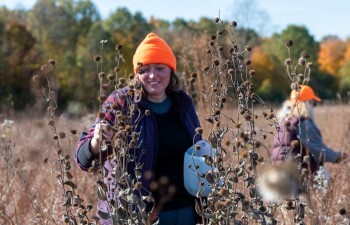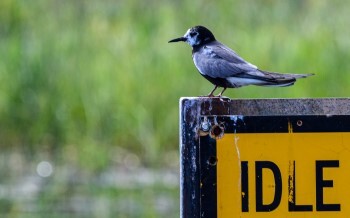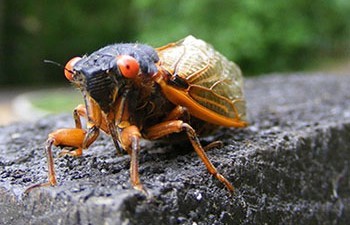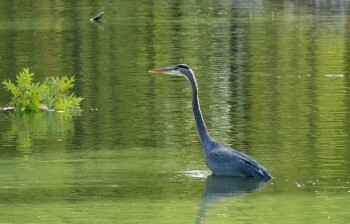|
CORRECTION: The DNR News Digest issued Monday included several incorrect links. All content has been updated below and all links now go to their intended webpages. We apologize for any inconvenience.
Here are a few of this week's stories from the Michigan Department of Natural Resources:
See other news releases, Showcasing the DNR stories, photos and other resources at Michigan.gov/DNRPressRoom.
PHOTO FOLDER: Larger, higher-res versions of some of the images used below, and others, are available in this folder.

Today is Earth Day, and there’s no better time to give back to our planet. As climate change continues to affect our landscapes and livelihoods, it can be hard to find concrete actions and activities that deliver real solutions. But there are things everyone can do to help mitigate the worst effects of climate change, and no action is too small when it comes to helping our planet.
Whether it’s taking part in community science programs, volunteering to clean up invasive species or collect native seeds in state parks or planting a tree at home, anyone can participate in building a greener future. Make a point to learn about your local ecosystems and what makes a healthy climate. Encourage your friends to take up these practices, too, and make a day of it!
Want to learn more? Check out our new Green Initiatives page, where you’ll find more opportunities to go green. When it comes to caring for our natural world, celebrate Earth Day today and every day by taking action – and make it a habit.
|

Join MI Birds Friday, April 26, at noon for "Demystifying Michigan’s Wetland Wonders Webinar: St. Clair Flats State Wildlife Area."
This free lunch-hour webinar is an excellent opportunity to learn about one of the best places in Michigan to experience the wonders of spring bird migration. In all, more than 400 bird species are expected to return or travel through our state this season!
St. Clair Flats is one of Michigan’s Wetland Wonders, an Audubon Important Bird Area and a coastal priority area where Audubon Great Lakes is working to restore the region’s wetlands for birds and people. Learn about the conservation work being done to help protect the St. Clair Flats and vulnerable bird species like the black tern that rely on it to thrive. Discover which birds visit the area during migration and how to take advantage of the area’s outdoor recreation activities.
Special guest speakers will include:
- John Darling, wildlife technician, Michigan DNR.
- Jenni Fuller, project coordinator, National Audubon Society.
- Ava Landgraf, conservation and research coordinator, Detroit Bird Alliance.
The event will take place virtually. RSVP to reserve your spot today. We hope to see you there!
This webinar is presented in partnership with MI Birds, a public outreach and education program by Audubon Great Lakes and the DNR. MI Birds aims to bridge the divide and deepen all Michiganders' engagement in the understanding, care and stewardship of public lands that are important for birds and local communities.
Questions? Contact Erin Ford at 313-820-0809.
|

Participants may complete their 5K – that's 3.1 miles – between April 22 (Earth Day) and April 26 (Arbor Day). This year, two in-person gatherings are taking place here in Michigan.
While registration officially closed April 1 to ensure timely shipping of race T-shirts, stickers and finisher medals, anyone interested in participating without receiving the commemorative items is welcome to run, walk or roll a marked 5K course at no cost in the following locations:
This Bob Ross-inspired program, now in its fifth year, continues to expand, with participation from Florida, Georgia, Indiana, Ohio, Oregon, Pennsylvania, South Carolina, Washington and Wisconsin. Some of these states are also planning in-person 5K gatherings.
“We encourage those who have registered to bring their family and friends to one of these in-person gatherings to run, walk or roll together,” said Michelle O’Kelly, who oversees fund and resource development for the DNR Parks and Recreation Division. “It’s an excellent chance to get outside and enjoy spring while also celebrating our love of trees. We’re so happy to have these opportunities to make this virtual event an in-person experience in a few areas of the state.”
|

For the first time in 221 years, bug enthusiasts across the Midwest will get a chance to observe a rare double emergence of cicada broods. The 17-year "Northern Illinois Brood" (Brood XIII) and the 13-year "Great Southern Brood" (Brood XIX) are coming this summer, a once-in-a-lifetime opportunity to see (and hear) both at the same time. These harmless insects spend most of their developmental life feeding off roots of perennial plants, waiting for the day they surface as adults to mate.
Cicadas tend to emerge when soil temperatures reach 64 degrees Fahrenheit or higher, so expect to start hearing that tell-tale buzz between now and May. Though fanfare over the double emergence has been great, we likely won’t see too many in Michigan. Only a portion of the Northern Illinois Brood overlaps with southern Michigan, so folks seeking a cicada soundscape may need to travel to Indiana or Illinois.
Want to learn more? Hannah Burrack is a professor and chair of the Department of Entomology at Michigan State University and answers cicada queries in this special issue of “Ask the Experts.”
|

The DNR has pledged to lead Michiganders in planting more than 50 million trees by 2030 through the Mi Trees program.
That effort is well underway, with 17 million trees planted by the DNR in state forests since 2021. An additional 112,000 trees have been planted by volunteers in public and private landscapes like yards, fields, parks and school grounds across the state.
-
Choose your tree and your location carefully and provide basic care as your tree grows.
-
Before putting a shovel in the ground, call 811 by phone or visit missdig811.org online. Workers will mark the locations of underground water, gas and other utility lines so you don’t accidentally dig them up.
-
Water your new tree frequently and deeply the first year or two, especially if weather is hot and dry. Water the entire area under the canopy of the tree, not just near the trunk. A layer of mulch will help protect tree roots, but don’t mound it up so that it looks like a volcano or let too much touch the tree trunk. That can damage the tree. Fertilizer isn’t recommended for the first several years.
After you’ve put the shovel and the hose away, relax and enjoy watching your tree grow over time. Don’t forget to pin your new planting on the DNR’s interactive map tracking trees planted toward our 50 million goal by 2030!
|

The newest episode of the DNR Wildlife Division's "Wildtalk" podcast is now available.
The April show takes wing with a discussion about the great blue heron, the largest heron in North America, and wraps with a chat about a frequent resident of ephemeral wetlands: wood frogs.
Nate Levitte, a DNR wildlife biologist based in southeast Michigan, stops by to talk about regional habitat.
DNR wildlife biologist Pete Kailing also drops in with an overview of hunting and trapping opportunities available this month.
|
 See more pictures by Michigan state parks photo ambassadors at Instagram.com/MiStateParks. For more on the program, call Stephanie Yancer at 989-274-6182. (This photo is by Ryan Burger DeVries, for the Michigan DNR, at Belle Isle Aquarium at Belle Isle Park in Wayne County.)
|